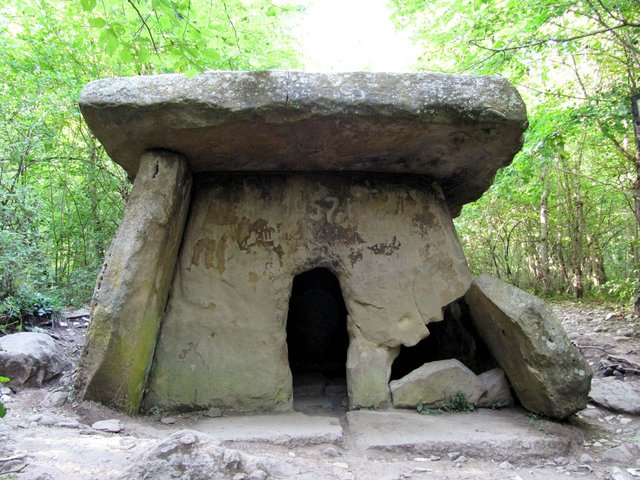
Not long ago I went Hiking in the mountains of Krasnodar region to the location of the dolmens. This is an amazing place and ancient structures.I thought it would be interesting to share information about the dolmens.
The study of buildings created by our ancestors thousands of years ago, frequently presents amazing surprises. With their help, we can learn a lot about the culture, religion and ancient technology. Recently, a group of British researchers proposed a new way to look at the stone dolmens with long corridors. In their opinion, the design of the tombs could be the prototype of the telescope was needed for observations of the stars.
Dolmens - the wonderful monuments of the past that are found all over Europe - from Britain to the Caucasus. They have many different forms and types. Built of huge stone slabs small "houses", a huge chamber carved in solid rock through the small entrance hole; the long corridors, walls and roof which are constructed of megaliths.
It is the latter and attracted the attention of a group of scientists from several universities in England. Joint work ended with the conclusion that the corridors of the tombs - not that other, as a kind of telescope through which the people of the bronze age was watching the movement of celestial bodies.
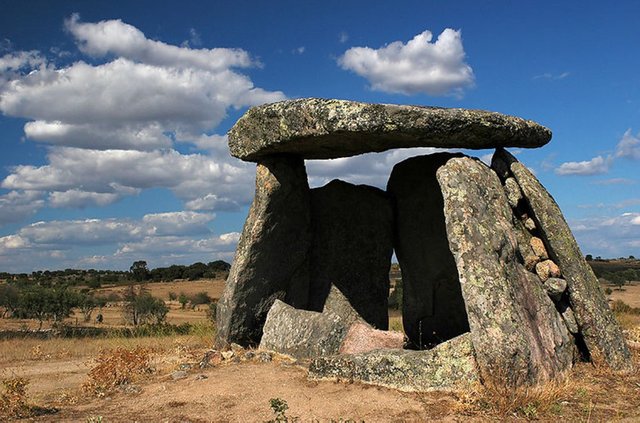
Semichastny dolmen in Central Portugal
Window to Aldebaran
The main object to study is the so-called Semikolenka dolmen tomb in Central Portugal. Its age is estimated at six thousand years. Then the area of the Iberian Peninsula was inhabited by tribes whose names are unknown. Collectively they are called the "culture of the megaliths", as they created the monuments that stand in the territory of modern Spain and Portugal.
Dolmens, like Iberian, occur in Britain, all over the South of Europe and to Italy. As well as in the Caucasus and North Africa. However, scientists have failed to install - came the builders of the dolmens of Africa, or, on the contrary, crossed to Africa from the Iberian Peninsula.
Researchers have noticed that if you long to be inside the tomb, in the dark, when you look out the eye begins to distinguish more details in the night sky. This is due to the isolation from other celestial bodies - especially the reflections of the setting or rising sun and reflected light of the moon.
One of the project managers Kieran Simcox admits: "We did not even know that until now nobody paid attention to, how does the color of the night sky that you can see."
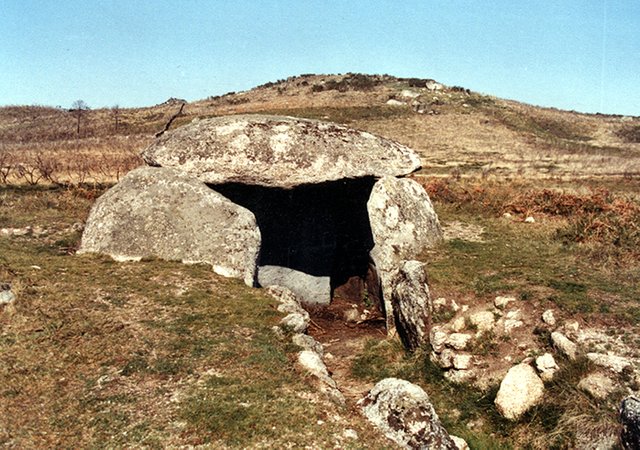
In addition, as it turned out, the entrance of the tomb is arranged in such a way that allows you to monitor a certain section of the sky - where is the star Aldebaran (alpha Taurus). This is one of the brightest stars in the night sky, it is often used as a benchmark, with Amateur astronomical observations. Ancient she might need for more important things.
According to one version, inside the tomb could happen rituals of communication with ancestors. While there, the participants of the ceremony could see the stars in the sky before those who were outside. This could be seen as a kind of sign, a signal from the dead.
Another suggestion is the initiation rites which are people whose status changed. This may be due to reaching a certain age (usually the age of majority) or the acquisition of some important status (for example, with the dedication of the priests). In this case, the commit could leave the tomb at night -vigil. And appeared in the doorway star "invited" him to come out, indicating that he passed the test.
Signal to the shepherds
The scientists ' conclusions are confirmed by the other monuments of the megalithic culture. Some of them even look more fit for astronomical observations than Semichastny dolmen. For example, another Portuguese dolmen Orca de Santo TISCO has before entering a long sloping corridor, covered with stone slabs.
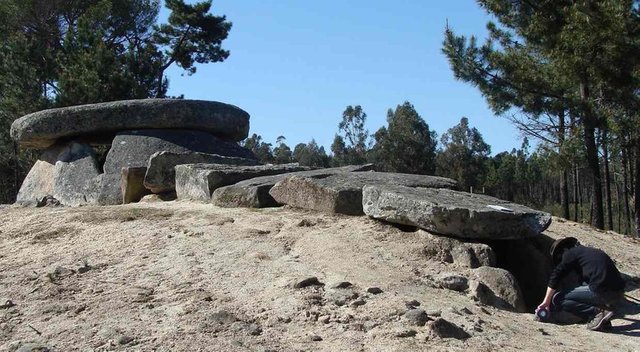
Dolmen Orca de Santo Tisco
This corridor acts as a kind of lensless telescope, focusing the vision on a specific, very small portion of the sky. Thus it becomes possible with the naked eye to distinguish even quite weak stars, as the vision does not interfere with any interference. It turns out that all corridor tombs(dolmens and among them isolated in a separate type) might be "stone telescopes.
In this version as to why the ancients spent so much labor in the construction of their "observatories", are not confined to religious and sacred issues. Dr Fabio Silva, from the University of Wales believes that more verata connection with the seasonal cycles of grazing.
In Portugal the herd for the summer are driven to graze in the Alpine pastures. Certainly so did the herders of the bronze age. They could see that the time to drive cattle to summer pastures comes at a time when Aldebaran is visible in the sky. After the winter of this star in the sky from the territory of Portugal is not visible.
"The first year, a rise of Aldebaran 6,000 years ago took place in late April - early may," explains Silva. Accordingly, it could be good, very accurate calendar with a marker for people to see when the time comes to send the herd to the upper pastures."
To confirm their findings, the research team plans to soon make some experiments in the laboratory. Experiments should demonstrate, as best visible celestial objects from the dark rooms in the twilight.
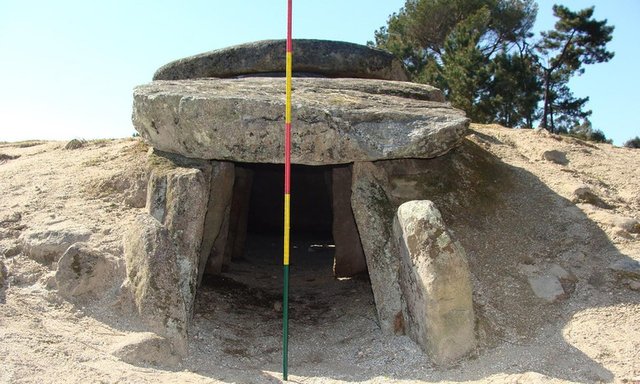
Dolmen Orca de Santo Tisco
The sky above us
About their research, the scientists made a joint report at the National astronomical meeting, held at the University of Nottingham in the summer of 2016. Despite the fact that astronomers he was received with great interest by the archaeologists while they were rather skeptical.
They indicate that the orientation of the tombs on these or other stars could be random. To prove the fact that the dolmens were built, initially focusing on celestial bodies, is not so easy, because of how lived a very ancient culture, did not leave behind written language, we know very little.
"Any archaeologist will tell you that to try to penetrate the minds of the people who built those ancient monuments - an extremely difficult task, - the astronomer Royal of Greenwich Observatory Marek Kukula. But in any case, this is an impressive study shows us that mankind has always admired the stars. And the observation of the sky played an important role in human society for millennia".
However, some publications have already declared the work of British scientists proof that astronomy was the oldest science in human history. Various studies dedicated to the knowledge of the ancients about the heavenly bodies and the impact of this knowledge on the life, appear every year. There is even a special term -"cultural astronomy". In the end, the fact that people looked at the stars, cannot be questioned. And it obviously could not pass without leaving a trace. Source:nlo-mir.ru
Thank you for sharing but this appears to be primarily copy/pasted from an automated Russian->English translation of this blog: http://nlo-mir.ru/sooruzheniy/47129-dolmeny-kak-kamennye.html
Translation: https://translate.google.com/translate?sl=ru&tl=en&js=y&prev=_t&hl=en&ie=UTF-8&u=http%3A%2F%2Fnlo-mir.ru%2Fsooruzheniy%2F47129-dolmeny-kak-kamennye.html
Downvoting a post can decrease pending rewards and make it less visible. Common reasons:
Submit
Considering the ancients were keen to line up their site with stars in the night sky, it would make sense that they could have been used to single out certain stars for observation.
It is interesting that Dolmens can be found throughout Europe, Northen Africa, and even in parts of Asia, meaning that it was a large world-wide idea. It makes you wonder how and why an idea was adopted by many different people across the planet.
Downvoting a post can decrease pending rewards and make it less visible. Common reasons:
Submit
It can say that was the only civilization that had a certain knowledge and technology, but later was divided into different Nations.
Downvoting a post can decrease pending rewards and make it less visible. Common reasons:
Submit
I like to think that ancient civilisations very highly global compaired to how we think of them. They were clearly sophisticated and organised, so it would not be an "out there" thought that suggests they may have had global trade and maybe even a forgotten empire that stretches further than one can imagine
Downvoting a post can decrease pending rewards and make it less visible. Common reasons:
Submit
@konstantin To me it seems as though there must have been a great civilization, long ago in the past, that by disaster declined and got fragmented. When you look at how old Gobekli Tepe is suppose to be, it's hard to believe it was made by hunters and gatherers. The ancients seem to be so obsessed with astronomy.
Downvoting a post can decrease pending rewards and make it less visible. Common reasons:
Submit
There are many archaeological finds that speak of the high development of ancient civilization. I think there was some lifting, and then the result of unknown circumstances led to a decline or degradation.
Downvoting a post can decrease pending rewards and make it less visible. Common reasons:
Submit
Hey, I probably should have mentioned this, but I live in Portugal. A friend of mine and myself have been a little puzzled over this mystery:
https://steemit.com/algarve/@pal33/ancient-algarve-mystery-series-part-1-the-cosmic-egg
Downvoting a post can decrease pending rewards and make it less visible. Common reasons:
Submit
I'm not understanding a few things here (gross understatement)
Unless they live in the garden of eden or some such primitives have a hard life. Gathering enough food to live is pretty much a full time job.
Moving big chunks of rock around in labor intensive to say the least. It takes a lot of energy and a lot of time that could be spent looking for food.
How can they do both.
Why?
Something ain't right.
Downvoting a post can decrease pending rewards and make it less visible. Common reasons:
Submit
this is a great post. out ancestral are one of the great engineer.
Downvoting a post can decrease pending rewards and make it less visible. Common reasons:
Submit
Thank you!
Downvoting a post can decrease pending rewards and make it less visible. Common reasons:
Submit